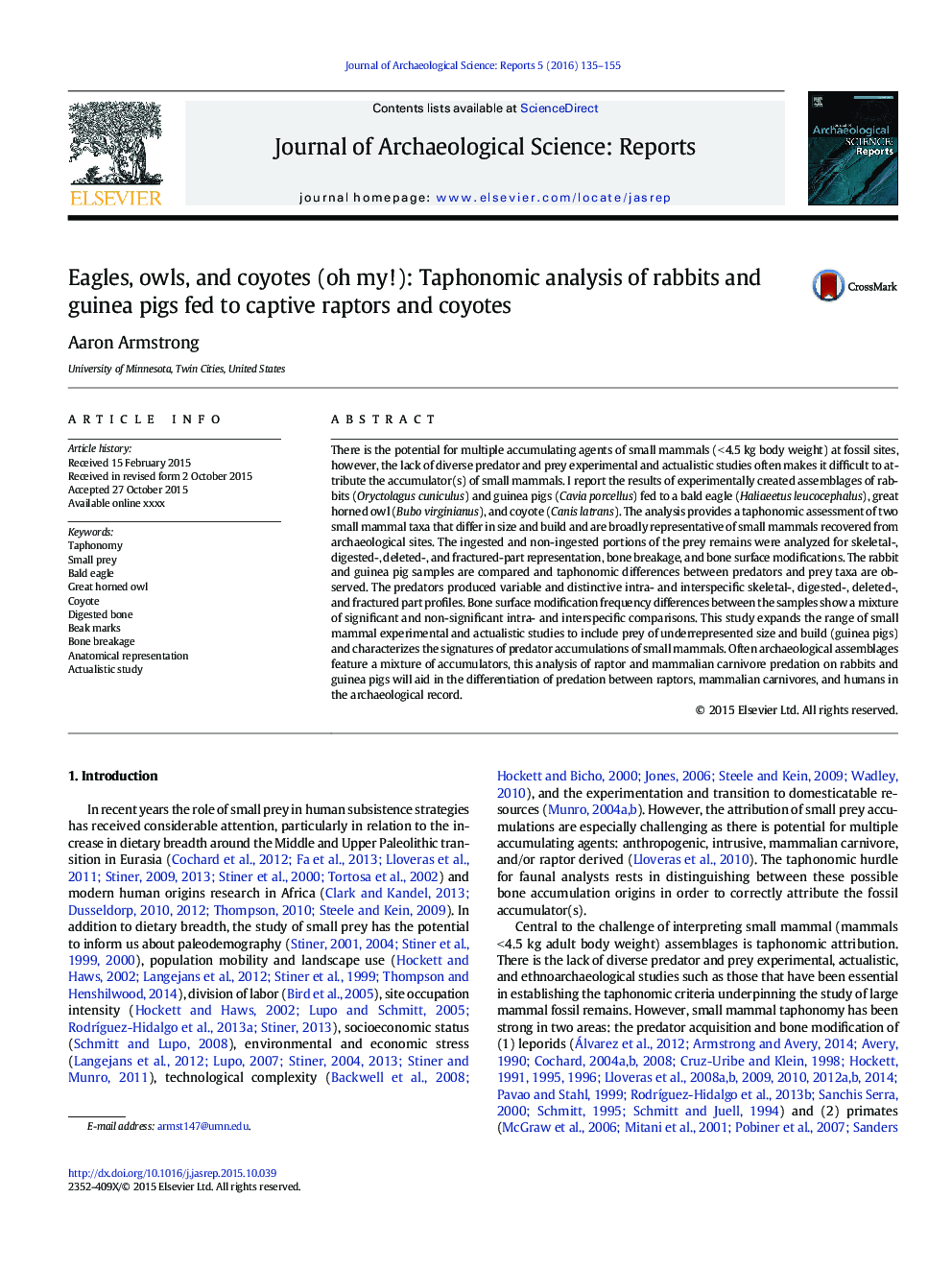| Article ID | Journal | Published Year | Pages | File Type |
|---|---|---|---|---|
| 7445925 | Journal of Archaeological Science: Reports | 2016 | 21 Pages |
Abstract
There is the potential for multiple accumulating agents of small mammals (<Â 4.5Â kg body weight) at fossil sites, however, the lack of diverse predator and prey experimental and actualistic studies often makes it difficult to attribute the accumulator(s) of small mammals. I report the results of experimentally created assemblages of rabbits (Oryctolagus cuniculus) and guinea pigs (Cavia porcellus) fed to a bald eagle (Haliaeetus leucocephalus), great horned owl (Bubo virginianus), and coyote (Canis latrans). The analysis provides a taphonomic assessment of two small mammal taxa that differ in size and build and are broadly representative of small mammals recovered from archaeological sites. The ingested and non-ingested portions of the prey remains were analyzed for skeletal-, digested-, deleted-, and fractured-part representation, bone breakage, and bone surface modifications. The rabbit and guinea pig samples are compared and taphonomic differences between predators and prey taxa are observed. The predators produced variable and distinctive intra- and interspecific skeletal-, digested-, deleted-, and fractured part profiles. Bone surface modification frequency differences between the samples show a mixture of significant and non-significant intra- and interspecific comparisons. This study expands the range of small mammal experimental and actualistic studies to include prey of underrepresented size and build (guinea pigs) and characterizes the signatures of predator accumulations of small mammals. Often archaeological assemblages feature a mixture of accumulators, this analysis of raptor and mammalian carnivore predation on rabbits and guinea pigs will aid in the differentiation of predation between raptors, mammalian carnivores, and humans in the archaeological record.
Related Topics
Social Sciences and Humanities
Arts and Humanities
History
Authors
Aaron Armstrong,
